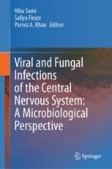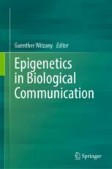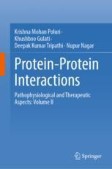Search
Search Results
-
Prions in Microbes: The Least in the Most
Prions are infectious proteins that mostly replicate in self-propagating amyloid conformations (filamentous protein polymers) and consist of...

-
Amyloids and prions in the light of evolution
Functional amyloids have been identified in a wide variety of organisms including bacteria, fungi, plants, and vertebrates. Intracellular and...

-
Innate immunity to prions: anti-prion systems turn a tsunami of prions into a slow drip
The yeast prions (infectious proteins) [URE3] and [PSI+] are essentially non-functional (or even toxic) amyloid forms of Ure2p and Sup35p, whose...

-
Fungal Keratinases: Enzymes with Immense Biotechnological Potential
Fungal enzymes are vital for various biotechnological processes and their impact is going to be felt much more in coming years. Fungal enzymes such...
-
In silico analysis of fungal prion-like proteins for elucidating their role in plant-fungi interactions
Prion-like proteins (PrLPs) have emerged as beneficial molecules with implications in adaptive responses. These proteins possess a conserved...

-
Viral and Fungal Infections of the Central Nervous System: A Microbiological Perspective
This book covers topics related to viral and fungal infections of the central nervous system (CNS), with a multidisciplinary reach, discussing...

-
Fungal Extracellular Vesicles in Pathophysiology
Fungal pathogens are a concern in medicine and agriculture that has been exacerbated by the emergence of antifungal-resistant varieties that severely...
-
Prions: Roles in Development and Adaptive Evolution
Prions are often considered as anomalous proteins associated primarily with disease rather than as a fundamental source of diversity within...
-
Fungal Diseases of Bovines
Fungal diseases annually cause significant livestock losses affecting the economy, animal diversity and ecological balance. These diseases are...
-
MIL-CELL: a tool for multi-scale simulation of yeast replication and prion transmission
The single-celled baker’s yeast, Saccharomyces cerevisiae , can sustain a number of amyloid-based prions, the three most prominent examples being...

-
The phenomenon of strain degeneration in biotechnologically relevant fungi
AbstractFungi are widely exploited for large-scale production in the biotechnological industry to produce a diverse range of substances due to their...

-
Phase separation in fungi
Phase separation, in which macromolecules partition into a concentrated phase that is immiscible with a dilute phase, is involved with fundamental...

-
Characteristics and potential clinical applications of the extracellular vesicles of human pathogenic Fungi
Extracellular vesicles (EVs) are a heterogeneous group of lipid membrane-enclosed compartments that contain different biomolecules and are released...

-
Zygocin – a monomeric protein toxin secreted by virus-infected Zygosaccharomyces bailii
Zygocin, a protein toxin secreted by virus-infected strains of the osmotolerant spoilage yeast Zygosaccharomyces bailii kills a broad spectrum of...
-
Do Inteins Serve as Mediators of Epigenetic Inheritance in Prokaryotes?
Intervening proteins, or inteins, are mobile genetic elements that are abundant in bacteria and archaea. Inteins are translated within host proteins...
-
Role of Proteins Interacting with the eRF1 and eRF3 Release Factors in the Regulation of Translation and Prionization
AbstractThe review discusses the role that proteins interacting with the translation termination factors eRF1 and eRF3 play in the control of protein...

-
Overview of Infective Syndromes of the Central Nervous System and Its Coverings: Decoding Chameleons and Mimics
Infections of the central nervous system (CNS), which include those of the brain’s cerebrum and cerebellum, spinal cord, optic nerves, and the...
-
Application of cold argon plasma on germination, root length, and decontamination of soybean cultivars
Applying cold discharge plasma can potentially alter plants' germination characteristics by triggering their physiological activities. As a main crop...

-
Relationship between Type I and Type II Template Processes: Amyloids and Genome Stability
AbstractClassical views of hereditary mechanisms consider linear nucleic acids, DNA and RNA, as template molecules wherein genetic information is...

-
Protein-Protein Interactions in Host–Pathogen Interactions
Human body is vulnerable to infection by several causative agents like viruses, bacteria, fungi, and protozoa. Currently, a lot of importance has...
